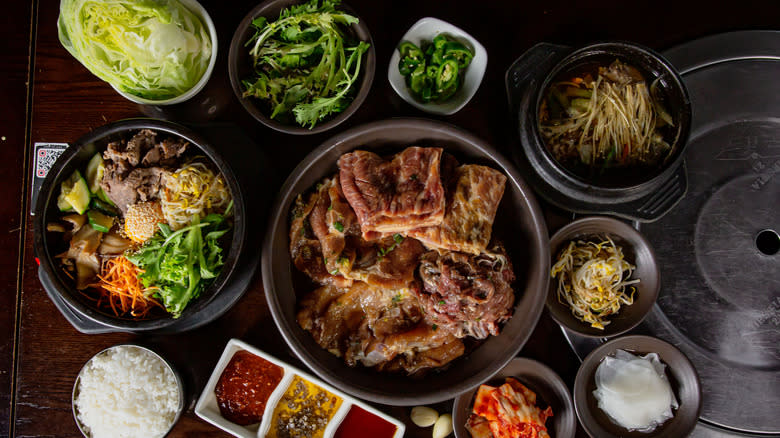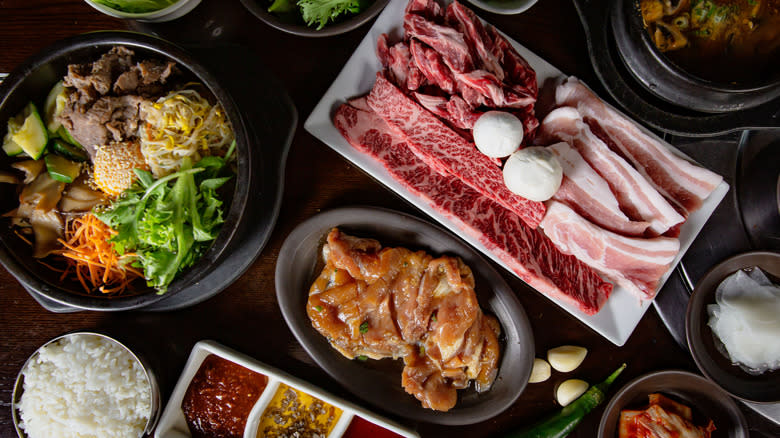The Absolute Best Greens To Eat With Korean Barbecue

It's rare to have a proper barbecue without a horde of good sides. The accompaniments — greens in particular — ground the tangy, rich sauces with their earthiness. While we have plenty of veggie fixtures for American barbecue, it can be a little trickier to find greens for Korean barbecue. So we tapped an expert to give us the lowdown on the best greens to serve alongside KBBQ.
Korean barbecue leans sweet and is paired with spicy or sour dishes, like kimchi, tteokbokki, or pickled onions, to enhance or temper the taste. There are some green options that John Bach (Executive Chef and Founder of Seoul Food KBBQ Catering in Los Angeles) recommends. "There aren't too many cooked greens served in traditional Korean cuisine, but a seasonal one we like to serve with our Signature KBBQ service is Sigeumchi-Namul," he says. "It's a blanched spinach dish served chilled and lightly marinated in soy sauce, sesame oil, and garlic."
Sigeumchi-Nagul isn't just a great pairing for barbecue — Bach finds that the dish can temper or bring out nuances from its fellow sides too. "It offers a refreshing balance when served alongside a spicy Kimchi and has enough umami for even picky eaters to enjoy," Bach explains. For greens that require minimal effort, Bach has another recommendation: "If we're talking raw greens, it's hard to pass on some fresh Pa-Muchim (shredded green onion salad tossed in a gochugaru vinaigrette) for a little extra raw onion bite to cut through the grease of meat."
Read more: Vinegar Cooking Hacks You'll Wish You Knew Sooner
Serve These Greens The Next Time You Make Korean BBQ

Although we may not associate it with "barbecue food," bok choy has steadily risen in popularity in Korean cuisine. The highly versatile vegetable can be customized into any form and flavor to work as a side dish. For Korean barbecue, pickling the cabbage lines up with the cuisine's focus on sour foods. Ahead of the earthy cabbage turning tart, grill the vegetable before pickling for smokier, caramelized notes. Grilling bok choy locks in the sweetness, keeping it intact even throughout the pickling process. Once the veggies are sufficiently sour, serve them with a drizzle of chili oil.
Seaweed is another Korean food staple, and the umami green certainly measures up to the culinary giant that is Korean barbecue. Make a side out of the greens by whipping up some miyeok muchim, or sweet and sour seaweed salad. The dish revives dried seaweed with a soak in water before boiling it. Combined with vinegar, soy sauce, onions, garlic, and honey or plum sauce, the tangy, sweet sauce calms the salinity of the seaweed. For a heartier take on the salad, combine it with chopped onions and tomatoes.
Read the original article on Tasting Table.


